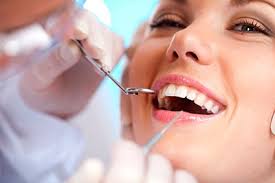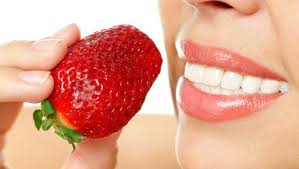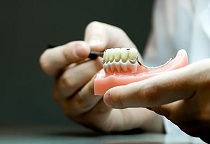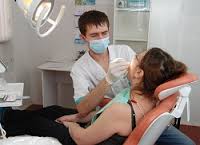Addiction to clasp dentures

At the first installation of the clasp prosthesis, the patient has a sensation of a foreign body in the oral cavity, which becomes dull in the process of getting used to.
The causes of discomfort and pain are that the prosthesis not only rests on the teeth, but also presses on the mucous membrane of the oral cavity.
After installing removable structures, the patient may experience the following inconveniences:
- Clasp prosthesis rubs the mucous membrane of the mouth.
- The presence of discomfort during eating.
- Biting the tongue, cheeks, or lips.
- Violation of diction.
- Strengthening salivation.
- Decreased taste perception.
- Feeling of nausea.
- The triggering of the gag reflex.
- Change the perception of cold and hot.
- Removal of food debris under the prosthesis.
Usually, all these sensations disappear within a month.
After the adaptation period has passed, addiction to clasp dentures begins and the patient begins to feel more comfortable with dentures than without them.
Stages of addiction
- Phase of irritation. It occurs at the time of installation of the prosthesis. During this phase, the clasp structure is perceived by the patient as a foreign body. This period lasts approximately five days.
- The period of upcoming partial braking. At this stage, manifestations such as increased salivation disappear, diction and chewing function are restored, and the tension of the lips and cheeks decreases.
- Complete braking.
The duration of each stage of getting used to the clasp prosthesis depends on the quality of the structure, the correctness of its choice for tooth restoration.
How to get used to a clasp prosthesis
One of the main conditions for getting used to the design is the constant use of the clasp prosthesis.

- It is necessary immediately after installation to learn how to put on and remove the prosthesis yourself. It is advisable to do this in front of the mirror.
- Before putting on the clasp structure, it must be moistened in water or use a special means for fixing.
- During the first two weeks, the prosthesis must be worn constantly and even at night, removing it only for cleaning and caring for the oral cavity.
- To reduce the manifestation of the gag reflex, you can try to dissolve the candy, pressing it with your tongue to the sky.
- During the day, drink hot drinks and rinse your mouth several times with warm water or herbal infusions (using chamomile or sage). Hot drinking softens and loosens the mucous membrane of the oral cavity, which allows the edges of the structure to plunge deeper into it.
- To quickly restore diction, you should talk more and read aloud for two or more hours. This should be done in a relaxed atmosphere.
- Until complete adaptation to the prosthesis, it is necessary to eat soft food, thoroughly and slowly chewing it so as not to burden the structure.
- Try not to bite your food with your front teeth.Chew food with the help of the posterior teeth, evenly distributing it left and right.
- Food should be taken chopped into small pieces. Vegetables and fruits should be present in the diet, which will allow you to quickly switch to food with familiar products. Do not eat solid foods (for example: crackers, nuts, sugar, etc.).
- After eating, it is necessary to remove and rinse the structure, and rinse the oral cavity.
When using the prosthesis, do not take long breaks in its use, since such actions can lead to the appearance of the initial manifestations.
If the design is not used within a month, as a rule, it becomes unusable, which is an indication for the manufacture of a new prosthesis.
Addiction
The maximum allowable period is one to one and a half months.
If during this period there is no addiction to the prosthesis, then such a design is contraindicated for use, or poorly made.
Once developed braking has greater resistance, due to which there is a shortening of the adaptation time to a new removable structure.

- Magnitude of construction.
- The degree of fixation of the prosthesis on the jaw.
- The nature of the transmission of pressure during chewing.
- The general reaction of the body to a foreign body.
- Type of nervous system and patient age.
- The general health of the patient.
Correction
After the arch prosthesis is installed, the appearance of painful sensations is caused by the pressure of the structure on the mucous membrane in connection with its gradual subsidence.
This factor is inevitable and cannot be fully taken into account in the manufacture of the prosthesis.

Related to this is the need for structural correction. To do this, you need to visit a doctor several times.
- The next day, it is recommended to visit the dentist to examine the oral cavity, even in the absence of complaints.
- If there is pain when using the design, it must be removed, but before visiting the doctor 3 to 4 hours before taking the prosthesis, you need to wear it. This is necessary so that the dentist can determine the location of the mucosal injury from the structure.
- If diction does not get better when using the prosthesis, you need to see a doctor.
After the correction, it is recommended not to use the design during the day. At this time, rinsing with herbal infusions (decoction of oak bark, chamomile flowers, etc.) is carried out in order to heal the oral mucosa.
Care
- Clasp dentures do not require special care.
- The design does not need to be removed at night until it becomes addictive.
- It is recommended to remove the prosthesis for cleaning with a toothbrush with paste and hygienic oral care.
- After eating, it is necessary to rinse the mouth and structure with running water, as well as clean from food particles.